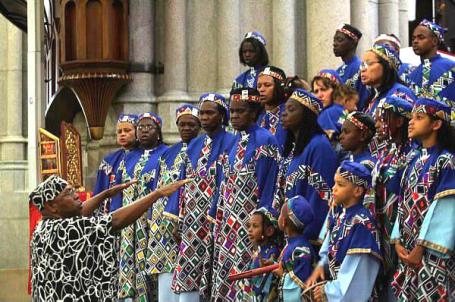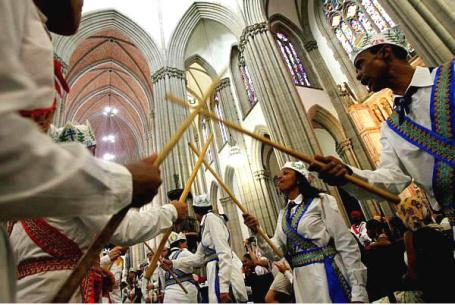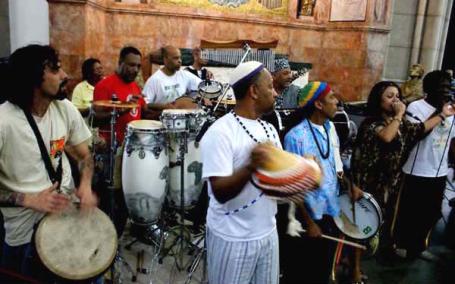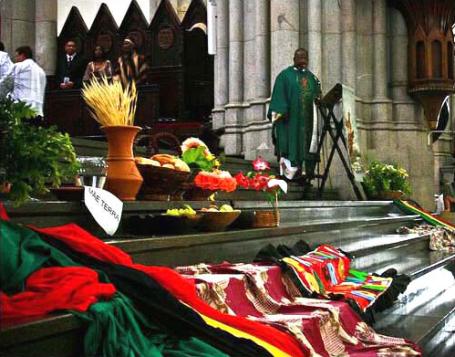John Burdick, Blessed Anastacia: Women, Race and Popular Christianity in Brazil (1998). Introduction, Chapter 2 (through p. 82).
This seems to be a simple question, but for my students, answering it was more difficult than it first appeared. This week, I taught John Burdick’s Blessed Anastacia: Women, Race and Popular Christianity in Brazil (1998). Burdick’s book is a critical, but fair treatment of the fate of Catholic Liberation Theology in Brazil. Burdick argues that liberation activists and theologians decided early on that the Inculturated Mass was the most effective tool in their ongoing efforts to raise the racial consciousness of and mobilize non-white Brazilians.
The concepts of the “Inculturated Mass” and “Inculturation” are known to Catholics around the world, but they take different shapes and forms in different communities. In Brazil, the Inculturated Mass was an initiative of liberation activists working in the spirit of the reforms of Vatican II. They worked with practices they identified as “African cultural elements” – music, dance, and iconography – and intentionally designed a Mass that would incorporate these elements. The first problem I encountered when teaching about the Inculturated Mass was that it was difficult for my students to picture Burdick’s description of this ritual. If I had this week to teach over again, I would have made a greater effort to find videos, images, and descriptions of Inculturated Masses from around the world. (For some examples, see a Chinese Inculturated Mass, a Betawi Inculturated Mass in Indonesia, a Ugandan Inculturated Mass, and others).
At one point, I asked students to list who was present during the Inculturated Mass, as described by Burdick. The brainstorm died out after an initial burst of ideas, which included dancers, singers, priests, non-White Brazilians, White Brazilians, women, only a few men, and liberation activists. I pointed out a rather important group of beings who were absent from this list: the invisible and special beings called “saints” we had read about. For instance, Burdick describes the Inculturated Mass’ valorization of Zumbi, the leader of a slave revolt whom Burdick describes as a “racially confrontational figure” and an inspirational figure to those activists who embrace a “separatist radicalism”1 There was also Jesus Christ, who becomes present in the Eucharist; and the spirits who are invited to be present by atabaque drums used in candomblé.
Atabaque drums have been incorporated into the Brazilian Inculturated Mass, liberation activists argue, as a way to valorize African cultural heritage. 2 Yet Burdick interviews several Catholic women who harbor a deep ambivalence about the drums. One woman named Marisa says she knows the drums are examples of African culture, but she also feels that the drums are really attracting spirits and entities.3
When we came to this section of Blessed Anastacia, my students had difficulty imagining the real presence of the spirits, and the significance of such figures for participants. One student commented on the way the atabaque drums “symbolized” a participant’s trauma stemming from her background in candomblé. The drums and the sound they made were referred to as “symbols” by several other students, as well. When we took a closer look at the text of Marisa’s commentary, though, we noticed that she does not use the word “symbol.” She says, “the spirits really are attracted.” Another woman, Sonia, complains that the food offerings left on the ground – another ritual element incorporated from candomblé into the Inculturated Mass – “invites the spirits.” 4
The message I took away from this conversation was about how hard it is for students to learn to treat invisible beings as real and present. It took work for my students to imagine the real presence of those special beings called saints, spirits, or divine beings.



